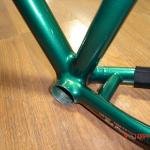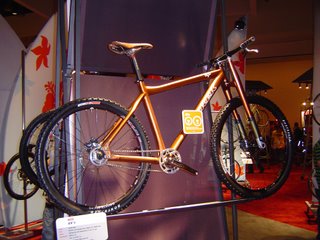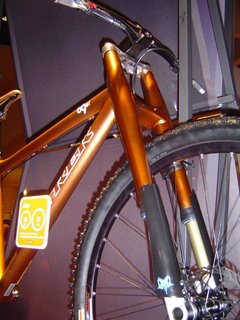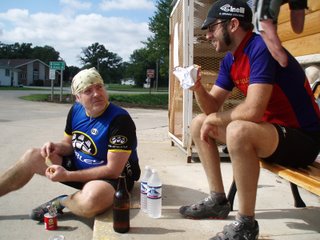
Welcome to the fifth and last post on Materials of Choice, which have covered materials commonly used to make bicycle frames and forks. Of all the materials covered, this one: carbon fiber, is the only non-metallic substance that is used in the industry on a wide basis to make bicycles from.
There are all sorts of uses for carbon fiber and it is an amazing material. So, just what exactly is it? Well, carbon fiber is a pretty descriptive clue in and of itself. Basically, something has been carbonized, (burned would be a very crude way to describe it) and the resulting residue, usually in the form of fillaments, ( but not necessarily that) is either woven, wound, or chopped up. That then is introduced to a resin, or in other words, an agent that bonds the fibers together, to be cured under intense pressure and heat. Usually done in some sort of mold, the resulting object is then finished and ready for use. Want to know more? Check out this translated Japanese paper on the definition, and types of carbon fiber. Follow the prompts at the top or bottom of the page to continue reading. It's not bad....only five pages! Come on!
As I have already indicated, carbon fiber has many uses, and it's even used for more things in the industry than bicycle frames forks, and parts. It's even in some of the clothes we wear! Since this is about frames and forks, we'll try to keep it on that. Carbon fiber was toyed around with for use on bicycles and even mountain bikes way back ( I know- everything is relative!) in the 80's with notable off road examples by Kestrel and Trimble. The cautious nature of mountain bikers comes out when you say "carbon fiber", because of some of the early examples that suffered failures at the hands of the rough and tumble terrain that the bikes were subjected to. This has permeated the psyche of riders up to this very day. However; Trek and several other top tier bicycle companies have persevered in bringing more and better examples of carbon fiber frame mountain bikes to the point now where reliability in the feild is as good if not better than it's metallic brethren.
So, what's the dealio with carbon fiber anyway? To weak to handle off roading? Nope, not anymore than any other popular material today. Too spendy? Well, yeah! Believe me, cheap carbon fiber is out there, but that's the stuff you don't want to ride! Hard to produce in different sizes? Uh-huh. But mostly because you have to have a mold to make the parts, and each different frame size has different angles, so you guessed it, it has different molds! That drives up costs. Plus, to do carbon fiber properly and safely, you have to have the correct environment to work in, again more expensive. Is it light? Crazy light! Is it strong? Yep! It's very strong, but it has to be properly designed and manufactured, which adds expense. What if I scratch it, is it toast? Mmm.......tooooaaast! ( sorry! I'm hungry!) Well, unless you compromise the integrity of the fibers, you are okay. Generally carbon fiber is protected by a hard, clear outer layer of resin. This is usually what gets scratched. However; if you see dust, fraying, or fuzz.....STOP USING THE BIKE! It's compromised structurally and may need replacement!
So, is carbon fiber for you? Yes: if you are a weight weenie, like techy stuff, or are financially well endowed. Will it hold up? Yeah, probably. If you race it and use it hard, that's okay if that's what it's designed for, but ya gotta use your noggin' and check out the frame, fork, or carbon bits if you crash! Replace when necessary! Carbon fiber is strong, but it'll break, and when it does, it usually is catastrophic. Be aware! That said, Mr. 24 himself has flogged carbon fiber frames from here to Japan without incident.
Well, that wraps up another Guitar Ted series! I hope you found it informative. I know I sure learned alot! Next up is some opinions on the newest 29"er bits and pieces being shown right now at Eurobike in Germany. There are some pretty tasty tidbits, so tune in tomorrow to get my take on it all. Late!










